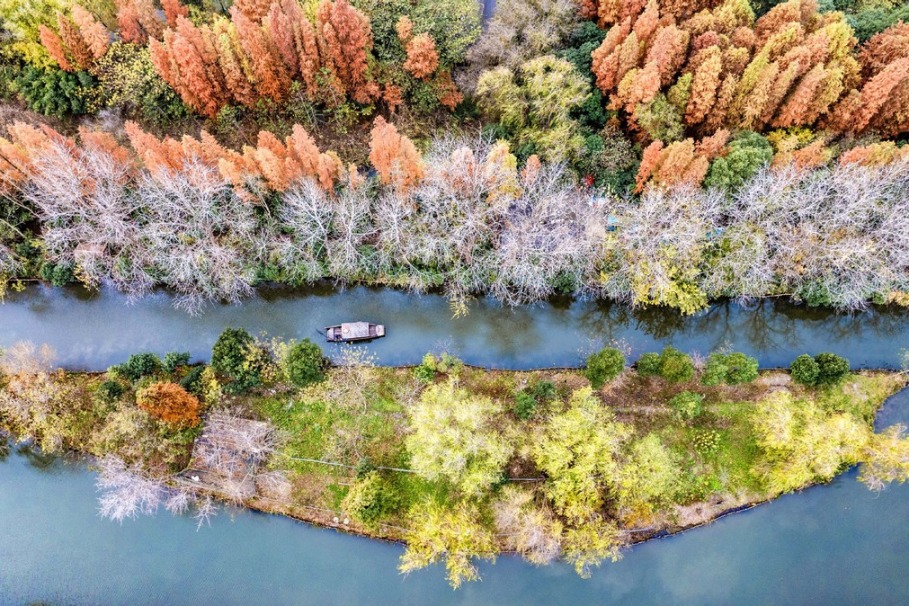Feathered friends get some high-tech help


An intelligent monitoring system is helping bird protectors in Chenhu Lake Wetland of Wuhan, Hubei province, by collecting data and learning more about the birds' habits, according to the wetland reserve.
The wetland covers about 11,600 hectares and is located in the delta area where the Yangtze River and Han River meet. Up to 86,000 birds of 227 species inhabited the wetland last year, its figures showed.
A limited number of bird-watchers and patrol guards may inevitably miss out counting some of the birds but the system can do it more accurately, according to the reserve.
In July last year, the monitoring system, the first of its kind in Hubei, was put into trial operation in the wetland. It has since recorded real-time monitoring data and assisted with patrolling.
The system can detect the type of birds arriving or leaving and which areas they prefer to move around, by identifying species through the sounds they make. It also monitors sounds in the wild and compares them with those in the database.
A video surveillance system tracks key protection areas all day. Photos of birds taken will be automatically compared with those in the database, with a combination of audio and video information increasing the recognition accuracy, according to the reserve.
The reserve's employees have also added tracking functions in the monitoring system by placing satellite trackers on bean geese and cormorants — migrating bean geese have been found to fly from Russian areas.
Feng Jiang, an engineer of the Chenhu wetland nature reserve management bureau, said that the tracking data has a positive effect on the protection of species globally.
"Since November last year, we have tried to clarify the migration routes of birds. We monitor where they stay and when they return to the reserve. The data tells us where birds come from and pass by, so we can cooperate with international organizations or countries to better protect them," he said.
The monitoring system also uses digital technology to build a simulation model. By simulating the flow of tourists, researchers can decide the maximum number of visitors in Chenhu Lake and prevent people from disturbing the birds.
Through the management of excessive growth in aquatic plants, researchers can also predict the possibility and scope of the environmental impact on the wetland and roll out targeted measures.
- Over 6,600 criminal cases related to wild animals filed, around 10,000 suspects arrested
- Mainland expands cases Hong Kong, Macao, Taiwan lawyers can handle
- Hong Kong police to expand search to vicinity of fire-affected buildings
- Death toll rises to 159 in Hong Kong fire: police
- Fujian offers subsidy for Taiwan residents opening Shaxian restaurants
- Russian tourist arrivals in Harbin surge following recent visa-free policy





































